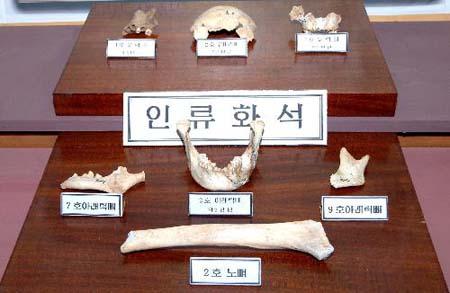DPRK displays archaeological gains
2010-03-26 09:38 BJT
PYONGYANG, March 25 (Xinhua) -- An exhibition of relics and fossil remains opened Thursday at Kim Il Sung University's nature museum of the Democratic People's Republic of Korea (DPRK), the official news agency KCNA reported.
 |
| Photo released by Korean Central News Agency on March 25, 2010 shows an archaeology exhibition in Pyongyang, capital of the Democratic People's Republic of Korea (DPRK). (Xinhua/KCNA) |
As part of archaeological gains collected during recent years of exploration in the River Taedong basin around Pyongyang, the exhibition displays seven pieces of anthropolites, 2,038 pieces of stoneware, 10,772 pieces of fossil animal bones of 33 kinds and 13 bonfire sites discovered at Chongphadae Cave in Hwangju County, according to the KCNA.
Five fossils of 20,000- to 60,000-year-old jawbones prove that River Taedong basin was the home to Korean ancestors.
The discovery of over 70 hand axes has refuted the consistent archaeological view that only chopper culture existed in the Asian region in the Paleolithic Age.
The displayed fossils of 33 pieces of animal remains and ro-pollens have also proved the suitability for human kinds to hunt and collect food in those areas.

 Mail
Mail Share
Share Print
Print


 Video
Video









 2009 China Central Television. All Rights Reserved
2009 China Central Television. All Rights Reserved